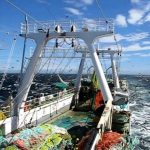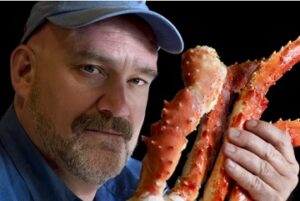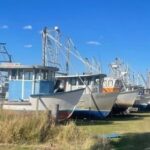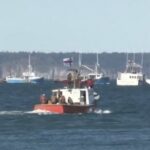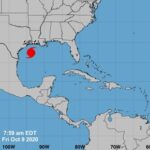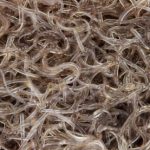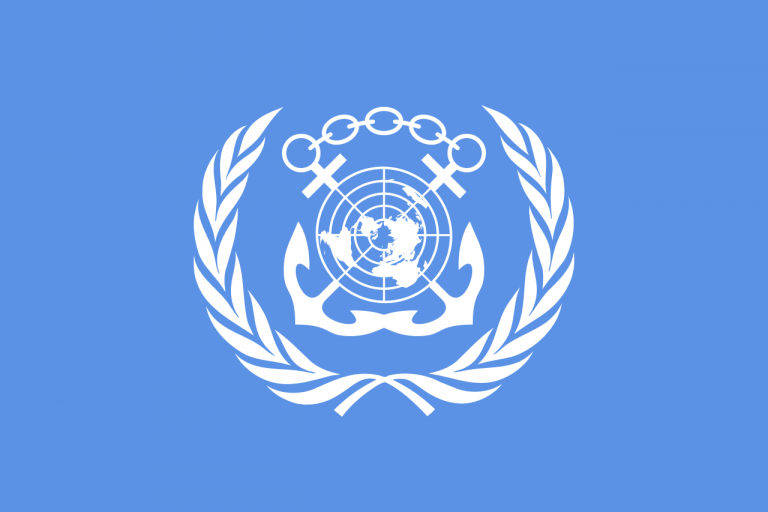Tag Archives: Prince William Sound
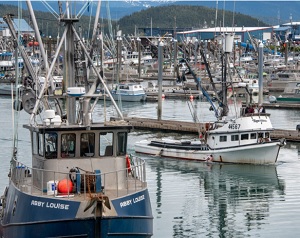
Salmon harvest coming in below forecast
Commercial harvests of Alaska’s iconic salmon are generally below expectation so far this season, particularly in the Copper River, where the preliminary catch to date includes 81,228 reds, 5,815 Chinooks and 1,296 chums. And overall for the drift gillnet harvesters and purse seiners in Prince William Sound, so far it is a smaller run that forecast, with a preliminary collective harvest of some 736,453 fish. That’s according to statewide data compiled by biologists with the Alaska Department of Fish and Game, who update their preliminary harvest report daily and post. >click to read< 09:42
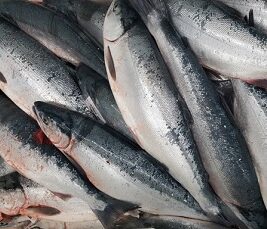
It aint looking good – Low prices, weak run hammer Copper River fishermen
Fishermen headed into the 2020 season knew it would be different, but in the weeks since the Copper River District opened on March 14, low prices and a weak run has dealt a one-two punch to fishermen. “The 2020 gillnet season for the Copper River and Prince William Sound is definitely the worst one I’ve experienced so far,” Mike Mickelson, a Cordova based fisherman, said. “The managers just have us closed for the Copper River fishery because they’re worried about getting escapement, >click to read< 10:33
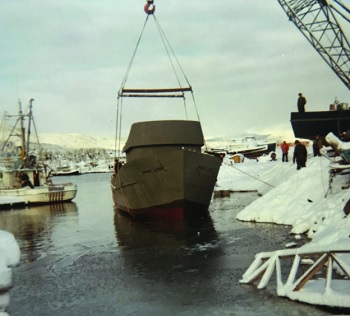
The Mayor of Kiniklik
Time had slipped by while studying each of the 118 Memorial Plaques attached to the railings that surround Joan Bugbee Jackson’s inspiring statute of a rain-battered fisherman steering into heavy seas. Having lived in Cordova all my life and worked on tenders or crewed on seine boats for years dating back to the early 1960s, it was hard not to be lost in memories inspired by these tributes to so many famous local fishermen. Each plaque had a story to tell, and indeed, as is often the case with those who go to the sea, each of the bygone was a master storyteller. Many of the plaques had tidbits I did not know. Yet the plaque that fascinated me the most was a tribute to The Mayor of Kiniklik. No, Cliff Alber had not been elected to this office. The term is used in this context to signify a fisherman who spends his whole season at one particular spot, learning the secret nuances of time, tide, currents and hidden underwater obstacles, as well as their impact on the flow of salmon in that area. photo ‘s, >click to read< 10:35
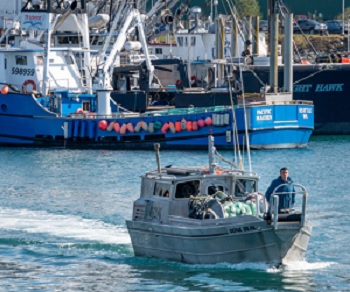
Third time was the charm
Light winds, fog and rain spread over Prince William Sound on the eve of a 12-hour Memorial Day fishery, then turned overcast during the holiday, as the commercial fishing crews netted some 1,467 Chinook and 33,752 sockeye salmon. The catch boosted the total harvest to date to an estimated 45,537 fish, including 4,935 kings and 39,823 red salmon, well over five times the individual catches on May 14 and May 18. The first two 12-hour openers were so slow that the Alaska Department of Fish and Game cancelled fishing for the third opener on May 21. Now the fishery appears to be picking up speed. “It’s still not good,” said veteran harvester Jerry McCune,“We’re getting further behind every day. Hopefully things will pick up in June.” >click to read< 17:15
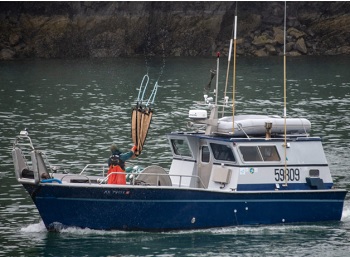
After cancellation of the third Copper River period, ADF&G okayed a 12-hour opener on Memorial Day
Light winds, fog and rain spread over Prince William Sound as veteran harvester Bill Webber headed out to sea on the eve of the Memorial Day opener for the famed Copper River wild salmon fishery, hoping perhaps that the third time’s the charm. The third time, that is, because the first opener on May 14, and the second opener on May 18 proved so below the forecast that Alaska Department of Fish and Game biologists halted the anticipated third opener on May 21, then decided on May 22 to go ahead with a third 12-hour opener on Monday, May 25. “The wind isn’t bad, maybe 15 miles an hour, a little foggy, a little rainy,” said Webber, owner of direct-to-consumer Paradigm Seafoods, from the helm of his boat, >click to read< 10:57

With coronavirus pandemic procedures in place, Copper River salmon season ready to open
Hundreds of vessels and workers flood into Prince William Sound each May for a chance to harvest the first fresh wild king salmon of the year, followed by the famous Copper River sockeye and the broader Prince William Sound pink salmon fisheries. However, with limited road access and health care facilities, city and state officials have been coordinating with the fleet and stakeholders about how to safely allow in deckhands, captains, and processing workers from Outside without inviting the pandemic to Cordova as well. “Fishermen are very concerned and have been concerned since day one,” said Francis Leach, the executive director of the United Fishermen of Alaska. “Now that procedures have been put in place, there are a lot of questions. It’s always a learning curve. Folks are really going to have to pay attention to (the mandate).” >click to read< 14:36
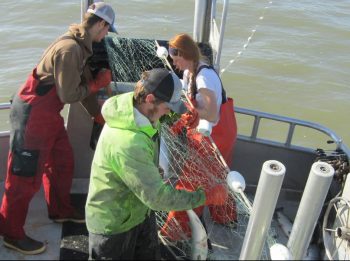
How one fisherman brings his wild salmon catch from Alaska to Missouri
Sean Guffey was studying communications at the University of Michigan when he drove to Alaska during the Exxon Valdez oil spill. Soon, he was on a fishing boat with scientists studying the impact of the spill. As he watched, Guffey learned from their observations and concerns about wildlife. Every year since, he has found his way back to Alaska. Today, he is the captain of Watermen, a boat docked in Bristol Bay. And every summer, he catches wild sockeye salmon and brings it back to Missouri to sell. photos, >click to read< 17:22
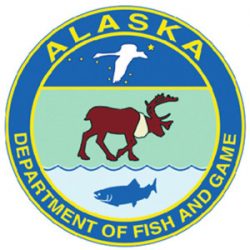
Feb. 14 deadline for bids on Tanner crab test fishery
State fisheries officials have set a Feb. 14 deadline for bids to participate in a Prince William Sound test fishery from Feb. 22 through April 7, to harvest up to 30,000 pounds of Tanner crab. Six lots of up to 5,000 pounds each are available in defined areas of the Northern and Hinchinbrook districts, Bids will be accepted for six individual lots for a maximum of 5,000 pounds each, at a minimum bid price of 35 cents a pound, with the contract to be awarded to the highest bidders for each lot. Vessel owners are welcome to bid on more than one lot. >click to read< 16:38
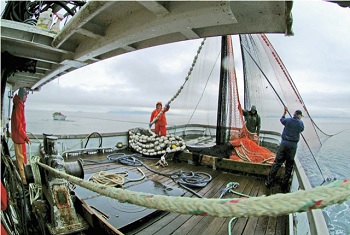
FISH FACTOR: First checks finally set for 2016 pink salmon disaster
It’s been a long time coming but payments should soon be in hand for Alaska fishermen, processors and coastal communities hurt by the 2016 pink salmon run failure, the worst in 40 years. Congress OK’d more than $56 million in federal relief in 2017, but the authorization to cut the money loose languished on NOAA desks in D.C. for more than two years. The payouts got delayed again last October,,, >click to read< 17:18

Coast Guard experiencing communication degradation in Prince William Sound, Alaska
Coast Guard Sector Anchorage watchstanders are experiencing intermittent communications within the 3,745 square-mile area of Prince William Sound and may not be able to hear mariners on VHF-FM radio. “As technicians work to analyze and restore Coast Guard radio coverage for Prince William Sound, I urge mariners to listen more carefully to channel 16 and to relay any possible distress calls to the Coast Guard via other means, like HF radio, satellite communications and cell phones,” said Cmdr. Scott Smith, chief of response for Coast Guard Sector Anchorage. >click to read< 06:31
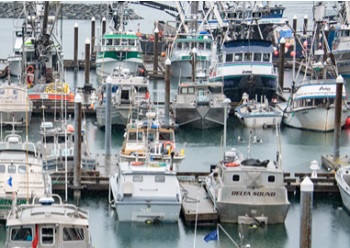
GHL down for Pollock pelagic trawl fishery
A directed fishery for walleye pollock using pelagic trawl gear in the Prince William Sound registration area will open at noon Jan. 20 with a guideline harvest level 2,988 metric tons, down 684 metric tons from last year’s quota. Registration for this fishery will be issued only to individuals who possess a 2019 miscellaneous saltwater finfish permit card for trawl gear. The deadline for registration is 5 p.m. Jan. 13. >click to read< 09:01
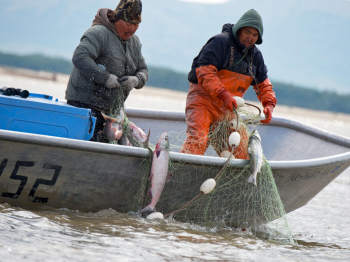
2019 PWS salmon harvest worth nearly $115 M, Statewide, 206.9 million fish brought in $657.6 M
Preliminary harvest figures compiled by the Alaska Department of Fish and Game put the value of the statewide commercial catch of 206.9 million salmon at $657.6 million, including $114.9 million for the 57.8 million fish caught in Prince William Sound. State biologists estimated the Prince William Sound harvest to include 18,399 Chinooks, averaging 18.42 pounds each, garnering fishermen an average,,, >click to read< 13:58
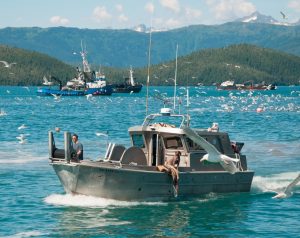
Prince William Sound season’s catch nears 56 million fish, statewide harvest now tops 201 million salmon
Statewide preliminary data compiled by ADF&G showed an overall harvest of 201 million fish, including 124.8 million pink, 55.3 million sockeye, 17.3 million chum, 3.4 million coho and 273,000 Chinook salmon. With the addition of some 100,000 fish last week, the 2019 Alaska commercial salmon season is nearly complete, noted Garrett Evridge of the McDowell Group, who compiles weekly commercial salmon reports in season on behalf of the Alaska Seafood Marketing Institute. >click to read< 10:47
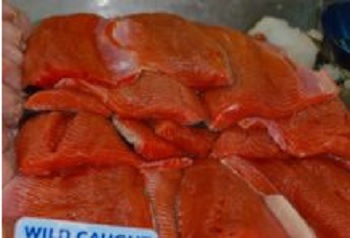
Coho harvests still coming from gillnet fishery
Coho harvests in Prince William Sound rose to 497,000 fish this week as drift gillnetters in the Coghill district made dozens of deliveries, and the Sound’s overall preliminary wild salmon deliveries hit 55.8 million fish. The Alaska Department of Fish and Game’s Cordova office opened the Coghill District for an 84-hour driftnet fishing period on Sept. 17 in the wake of a 60-hour period that opened on Sept. 12, while the purse seine fisheries remained closed. >click to read< 14:51
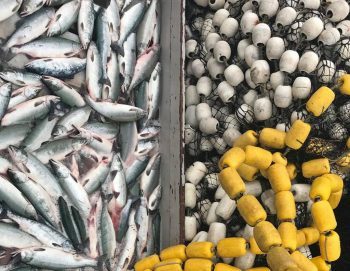
Statewide harvest, boosted by the pink catch, rises to nearly 185M fish
A promise of rain loomed for Sept. 1-3, and temperatures cooled, but with no rain leading up to the Labor Day weekend holiday, a lot of pink salmon were still ending up dying off before spawning in Prince William Sound.“With low water the fish can’t enter the streams,”,,, It happens in some streams every year, but this year has been more intense, with little to no rain and drought conditions. Still compared to where the harvest stood on Aug. 6 there’s been quite a bit of improvement,,, >click to read< 14:11
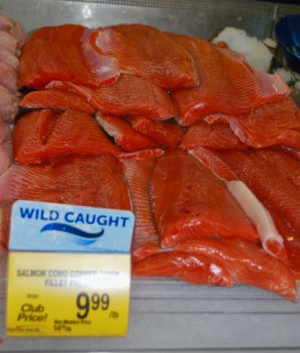
Prince William Sound humpy harvest late, compressed but strong
Commercial harvests of humpies in Prince William Sound rose to over 34 million fish through Tuesday, Aug. 20, up nearly 12 million fish in seven days, while the overall salmon harvest for the Sound rose from 30.5 million to nearly 42 million for the same period. Still the pink salmon harvest remains late and compressed for wild stocks and the Prince William Sound Aquaculture Corp. run, said Charlie Russell, seine area management biologist for the Alaska Department of Fish and Game in Cordova. “The most likely culprit is the record heat wave and drought conditions that have affected much of Alaska,” >click to read< 12:39
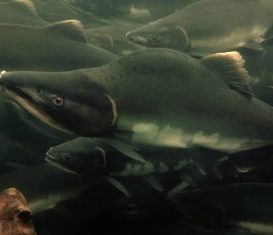
Prince William Sound Pink salmon fishery back in business
Pink salmon commercial harvests are still below forecasts, but even with no prospect of rain predicted so far until Aug. 22, the catch in Prince William Sound rose from 17.6 million to 22.2 million within the past week. Preliminary harvest figures posted by the Alaska Department of Fish and Game showed that 22,904,000 pinks comprised the bulk of the overall Prince William Sound harvest as of Aug. 14. The rest of the overall catch to date of 30.5 million fish in the Sound’s commercial harvest includes 5,026,000 chum, 2,526,000 sockeyes, 18,000 Chinook and 15,000 coho salmon. >click to read< 13:13
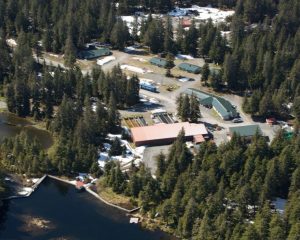
PWSAC produces wild salmon for all
As general manager/CEO of the Prince William Sound Aquaculture Corp., Casey Campbell is all about helping to educate the public about PWSAC’s role in developing sustainable salmon fisheries and how they do it. The state’s hatchery program itself, notes Campbell, was started in the mid-1970s to enhance, not replace wild salmon, so that coastal communities could have economies based on salmon, many challenges notwithstanding. The Good Friday earthquake in March of 1964 changed the topography of Prince William Sound and then in the 1970s there was very cold weather, he said. >click to read< 19:58

Humpy catch hits 7.4M
Humpy harvests in Prince William Sound jumped from 3.4 million to 7.4 million, as the overall wild salmon harvest for the Sound rose to over 14 million fish. Along with the growing pink salmon harvests, area processors have received 4,386,000 chum, 2,120,000 sockeye, 18,000 Chinook and about 1,000 cohos through July 16, according to the latest preliminary Alaska commercial salmon harvest report updated daily during the season by the Alaska Department of Fish and Game. It’s been a good season for setnetters and drift gillnetters, according to Jeremy Botz, gillnet area management biologist at Cordova with the Alaska Department of Fish and Game. >click to read< 13:19
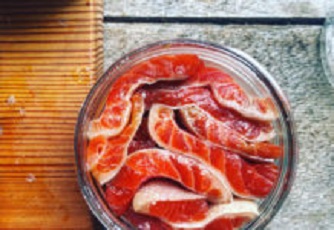
Prince William Sound salmon harvests jump to 5 M+
Delivery of wild Alaska salmon to processors in Prince William Sound reached upwards of the five million fish mark as of July 2, as the catch from the Copper River drift fishery alone topped one million fish from the Copper River. For Prince William Sound the overall cumulative preliminary catch data shows 2,889,000 chum, 1,438,000 sockeye, 687,000 pink and 18,000 Chinook salmon. For the Copper River drift fishery,,, >click to read< 15:58
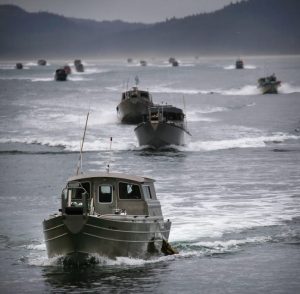
Harvest numbers are mixed as season gets underway. Meanwhile, PWS wild salmon harvest tops 1.5M fish
Prince William Sound landings of wild Alaska salmon have been strong, as the fishery gets under way. Meanwhile sockeye production in Kodiak, Cook Inlet and Chignik is off to a slow start, fisheries economist Garrett Evridge says in his first harvest report of the season. “Year-to-date statewide harvest of sockeye is more than three times the prior year,” said Evridge, an economist with the McDowell Group, >click to read<14:08
PWS wild salmon harvest tops 1.5M fish – As more areas of Prince William Sound opened for commercial fishing, preliminary data compiled by the Alaska Department of Fish and Game put the catch at 1.5 million salmon through June 18, including some 813,942 fish caught in the Copper River. >click to read<
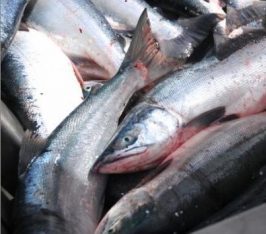
Early numbers show strong start for commercial sockeye salmon harvest in Prince William Sound
Commercial sockeye salmon fishing in Prince William Sound is off to a strong start, while it’s weaker in a handful of other fisheries, according to Anchorage consulting firm the McDowell Group. The statewide sockeye harvest of 696,000 fish through June 8 was more than three times what it was at the same time in 2018, according to numbers the McDowell Group prepared for the Alaska Seafood Marketing Institute. Most of that harvest — 607,000 fish — was in Prince William Sound. Kodiak, Cook Inlet and Chignik fisheries were off to a slow start, McDowell economist Garrett Evridge said. Pink salmon numbers spiked in the second week of June, >click to read<10:38
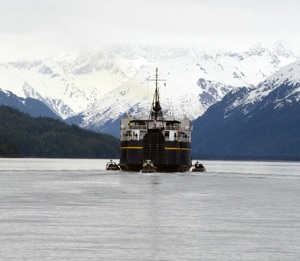
“Northern Edge” – Alaskans at war with U.S. military over readiness exercises
The air in Cordova, Alaska, is an unlikely mix of fresh glacial air and diesel fuel fumes. On one side of the isolated town rise the Chugach Mountains; on the other, a worn-looking fleet of fishing boats float in Prince William Sound, a northern branch of the Gulf of Alaska. There are no roads in or out of Cordova, and more than half of its 2,000-plus residents depend on the salmon industry. But for two weeks this May, their way of life could be under fire — literally. >click to read<08:20
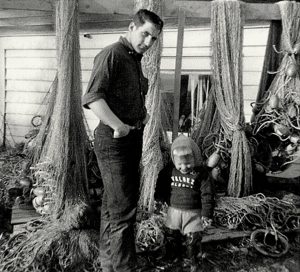
30 years after oil spill, he will never forget or forgive
Bob Day is 75 now. A fisherman for much of his life, he grew up on Alaska’s Prince William Sound. He will never, ever forget or forgive the desecration of that place he loves — or what he described as “a horror movie in your mind.” It’s been 30 years since the Exxon Valdez oil tanker slammed Bligh Reef just after midnight March 24, 1989. With its hull torn open, it spilled 11 million gallons of crude into Prince William Sound. >click to read<18:18
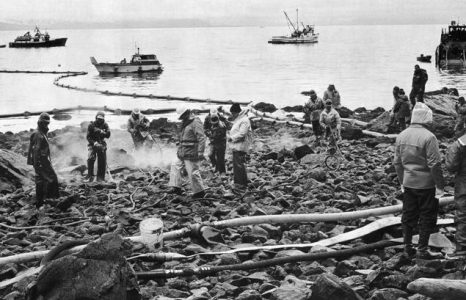
Photos: Remembering the Exxon Valdez oil spill 30 years later
It was just after midnight on March 24, 1989, when an Exxon Shipping Co. tanker ran aground outside the town of Valdez, Alaska, spewing millions of gallons of thick, toxic crude oil into the pristine Prince William Sound. The world watched the aftermath unfold: scores of herring, sea otters and birds soaked in oil, and hundreds of miles of shoreline polluted. Commercial fishermen in the area saw their careers hit bottom. It’s been 30 years since the disaster, at the time the largest oil spill in U.S. history. Only the 2010 Deep Water Horizon disaster in the Gulf of Mexico has eclipsed it. >click to read<16:16
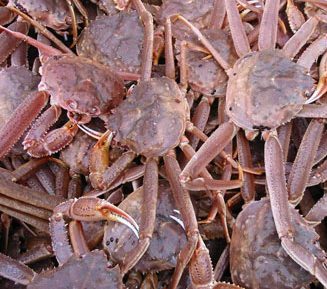
Prince William Sound Tanner crab fishery gives winter season a boost
A rejuvenated Tanner crab fishery in Prince William Sound is showing positive signs of finishing out its second season in 30 years. The fishery opened for the first time since 1988 in 2017, operating on commissioners permits. A test fishery operated as an information-gathering pot fishery in the area in 2016 to a limited number of vessels. Based on Alaska Department of Fish and Game survey data, the stocks were good to go for another season this year, opening March 1 and closing either by EO or on March 31. So far, 11 vessels have landed about 16,850 Tanner,,, >click to read<09:37
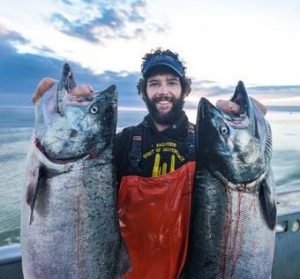
One king salmon worth more than a barrel of oil to AK fishermen; Updates for 2018/19
Salmon stakeholders are still crunching the numbers from the 2018 season, which up front has two distinctions: it ranks as one of the most valuable on record to fishermen at nearly $596 million, and at just over 114 million salmon, it’s one of the smallest harvests in 34 years. A breakdown by the McDowell Group shows the sockeye harvest was the second most valuable in 26 years; the chum catch was the third most valuable since 1975. Audio report, >click to read<17:06

Prince William Sound fishermen test oil spill response skills near Whittier
At first glance, it appeared to be a carefully orchestrated aquatic slow dance, set to the tune of barking sea lions. About 20 small commercial fishing vessels were joined Tuesday by large barges and state-of-the-art tugboats to test new oil spill response equipment on Prince William Sound. Smaller craft towed “current buster” oil booms in tandem with larger fishing boats deploying skimmers that would collect oil from the boom for transfer to a barge tank. It was one in a series of training exercises by Alyeska Pipeline Service Co.’s Fishing Vessel Response Program, which has an annual budget of $8 million. “Without these fishing vessels you don’t have a response plan,” said Jeremy Robida, the spill prevention and response manager for the Prince William Sound Regional Citizens’ Advisory Council. >click to read<15:30
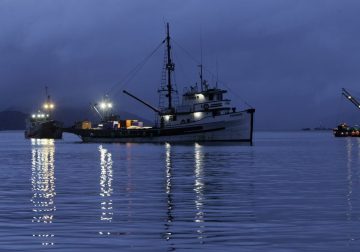
Alaska’s 2018 commercial salmon harvest 30 percent below forecast, yet some fisheries have boomed
The statewide commercial salmon harvest is about 31 percent below the preseason forecast, the Alaska Department of Fish and Game said in a statement Thursday. The 2018 season, it said, “has been unusual.” Preliminary numbers show a statewide commercial salmon harvest of about 103 million fish so far. That’s subject to change, because the fishing season isn’t completely over yet. Fish and Game’s forecast in March projected a total statewide harvest of 147 million fish. >click to read<08:03
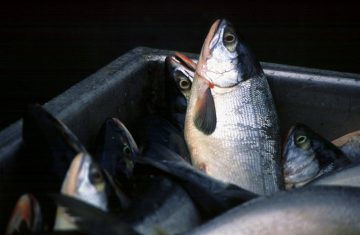
Slow going toward the 39M harvest forecast
Commercial salmon harvests in Prince William Sound topped the 15.4 million mark through July 31, up by three million fish over the previous week, compared to 20.4 million delivered by the same time a year ago. All five species of Pacific salmon are running below the catch rate or the same statistics week one year ago. The pink salmon harvest has reached nearly 11 million fish, compared to 13 million at this time in July of 2016, and this year’s forecast of 32.7 million humpies. Deliveries of sockeyes have reached 1.3 million fish, compared to a year-to-date harvest in 2017 of 1.4 million, and the keta harvest stood at 3.2 million fish, compared to a catch of 5.4 million chums through the same time last year. On the bright side, the Copper River district >click to read<13:47


































